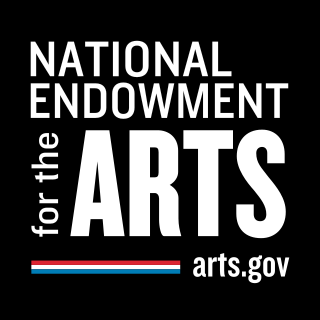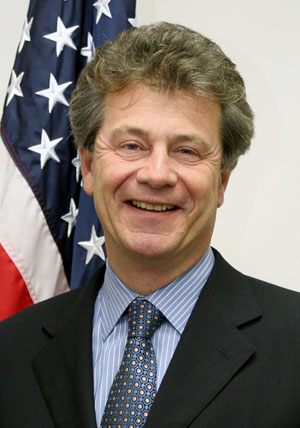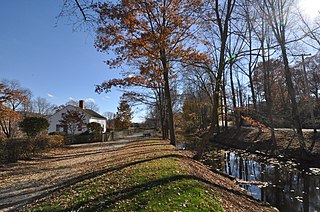
The National Endowment for the Arts (NEA) is an independent agency of the United States federal government that offers support and funding for projects exhibiting artistic excellence. It was created in 1965 as an independent agency of the federal government by an act of the U.S. Congress, signed by President Lyndon B. Johnson on September 29, 1965. It is a sub-agency of the National Foundation on the Arts and the Humanities, along with the National Endowment for the Humanities, the Federal Council on the Arts and the Humanities, and the Institute of Museum and Library Services.

The National Endowment for the Humanities (NEH) is an independent federal agency of the U.S. government, established by the National Foundation on the Arts and the Humanities Act of 1965, dedicated to supporting research, education, preservation, and public programs in the humanities. The NEH is housed in the Constitution Center at 400 7th St SW, Washington, D.C. From 1979 to 2014, NEH was at 1100 Pennsylvania Avenue, N.W., Washington, D.C., in the Nancy Hanks Center at the Old Post Office.

In the United States, a National Heritage Area (NHA) is a site designated by Act of Congress, intended to encourage historic preservation of the area and an appreciation of the history and heritage of the site. There are currently 62 NHAs, some of which use variations of the title, such as National Heritage Corridor.

The National Historic Preservation Act is legislation intended to preserve historic and archaeological sites in the United States of America. The act created the National Register of Historic Places, the list of National Historic Landmarks, and the State Historic Preservation Offices.

The Advisory Council on Historic Preservation (ACHP), an independent United States federal agency, is charged with the mission to promote the preservation of the nation's diverse historic resources. The ACHP advises the President and Congress on national historic preservation policy and also provides a public forum for stakeholders and the public to influence federal agency decisions regarding federal projects and programs that affect historic properties. The ACHP promotes the importance of historic preservation to foster an understanding of the nation's heritage and the contribution that historic preservation can make to contemporary communities, along with their economic and social well-being.
The President's Committee on the Arts and the Humanities (PCAH) is an advisory committee to the President of the United States on cultural issues. It works directly with the White House and the three primary cultural agencies: the National Endowment for the Arts (NEA), National Endowment for the Humanities (NEH), and the Institute of Museum and Library Services (IMLS), as well as other federal partners and the private sector, to advance wide-ranging policy objectives in the arts and humanities. These include considerations for how the arts and humanities sectors can positively impact community well-being, economic development, public health, education, civic engagement, and climate change across the United States.

Clifford Michael Sobel is an American business executive, financier, Republican fundraiser, U.S. diplomat and former ambassador.
The State Historic Preservation Office (SHPO) is a state governmental function created by the United States federal government in 1966 under Section 101 of the National Historic Preservation Act (NHPA). The purposes of a SHPO include surveying and recognizing historic properties, reviewing nominations for properties to be included in the National Register of Historic Places, reviewing undertakings for the impact on the properties as well as supporting federal organizations, state and local governments, and private sector. States are responsible for setting up their own SHPO; therefore, each SHPO varies slightly on rules and regulations. To link these differences with the SHPOs, the National Conference of State Historic Preservation Officers (NCSHPO) was created as a "point of contact" according to the National Historic Preservation Act.

The Texas Historical Commission is an agency dedicated to historic preservation within the U.S. state of Texas. It administers the National Register of Historic Places for sites in Texas.
The American Battlefield Protection Program (ABPP) is a United States federal government program created by the Secretary of the Interior in 1991, with the aim of preserving historic battlefields in the United States. In 1996, Congress signed into law the American Battlefield Protection Act, which officially authorized the ABPP. The program operates under the American Battlefield Protection Program Authorization as of 2009.

The Institute of Museum and Library Services (IMLS) is an independent agency of the United States federal government established in 1996. It is the main source of federal support for libraries and museums within the United States, having the mission to advance, support, and empower America’s museums, libraries, and related organizations through grantmaking, research, and policy development.” In fiscal year 2023, IMLS had a budget of $313.58 million. As of 2023, IMLS currently has 70 full-time employees, many of whom still work remotely. In 2022, the employees voted to unionize, joining hundreds of thousands of federal workers who have joined the American Federation of Government Employees (AFGE) to “build power and have a voice at work.”
The Historic Preservation Fund (HPF) provides financial support for historic preservation projects throughout the United States. The fund is administered by the National Park Service (NPS), pursuant to the National Historic Preservation Act of 1966 (NHPA). The fund provides state historic preservation agencies with matching funds to implement the act.

Save America's Treasures is a United States federal government initiative to preserve and protect historic buildings, arts, and published works. It is a public–private partnership between the U.S. National Park Service and the National Trust for Historic Preservation. The National Endowment for the Arts, National Endowment for the Humanities, and Institute of Museum and Library Services are also partners in the work. In the early years of the program, Heritage Preservation and the National Park Foundation were also involved.

The Omnibus Public Land Management Act of 2009 is a land management law passed in the 111th United States Congress and signed into law by President Barack Obama on March 30, 2009. The bill designates millions of acres in the US as protected and establishes a National Landscape Conservation System. It includes funding for programs, studies and other activities by the Department of the Interior and the Department of Agriculture, and in some cases bars further geothermal leasing, oil and gas leasing, and new mining patents on certain stretches of protected land.
The Department of Archaeology and Historic Preservation (DAHP) is an independent government agency in Washington state which serves several functions, including regulatory functions. The agency inventories and regulates archaeological sites; houses Washington's State Historic Preservation Officer, State Archaeologist, State Architectural Historian and State Physical Anthropologist; maintains the Washington Heritage Register and Heritage Barn Register; provides expertise on environmental impacts to cultural resources; administers historic preservation grants for heritage barns and historic county courthouses; encourages historic preservation through local governments; provides technical assistance for historic rehabilitation and using historic preservation tax credits; and maintains extensive GIS databases to catalog the state's historic and prehistoric cultural resources.

Preservation Action is an American 501(c)4 non-profit historic preservation advocacy organization. Preservation Action was created in 1974 to serve as the national grassroots lobby for historic preservation. The organization seeks to make historic preservation a national priority by advocating to all branches of the federal government for sound preservation policy and programs through a grassroots constituency of hundreds of members from throughout the United States. Preservation Action provides information and training, and encourages direct contact with elected representatives, with National Historic Preservation Advocacy Week being the highlight of advocacy and outreach efforts each year.

The White House Initiative on Asian Americans, Native Hawaiians, and Pacific Islanders (WHIAANHPI) is a United States governmental office that coordinates an ambitious whole-of-government approach to advance equity, justice, and opportunity for Asian Americans, Native Hawaiians, and Pacific Islanders. The Initiative collaborates with the Deputy Assistant to the President and AA and NHPI Senior Liaison, White House Office of Public Engagement and designated federal departments and agencies to advance equity, justice, and opportunity for AA and NHPIs in the areas of economic development, education, health and human services, housing, environment, arts, agriculture, labor and employment, transportation, justice, veterans affairs, and community development.
Title 54 of the United States Code, entitled National Park Service and Related Programs, is the compilation of the general laws regarding the National Park Service. It is the newest title in the United States Code, added on December 19, 2014, when U.S. President Barack Obama signed H.R. 1068 into law. It has three subtitles:

Blackstone River Valley National Historical Park is a National Park Service unit in the states of Rhode Island and Massachusetts. The park was created for the purpose of preserving, protecting, and interpreting the industrial heritage of the Blackstone River Valley and the urban, rural, and agricultural landscape of that region. The Blackstone River Valley was the site of some of the earliest successful textile mills in the United States, and these mills contributed significantly to the earliest American Industrial Revolution. The subsequent construction of the Blackstone Canal, a few years after the successful completion of the Erie Canal, helped to sustain the region's industrial strength.
Most cultural policy in the United States is enacted at the local and state level, though federal programs also exist to carry out cultural policy. These promote the culture of the United States, including visual art, performing arts, heritage, language, museums, libraries, and sports.












